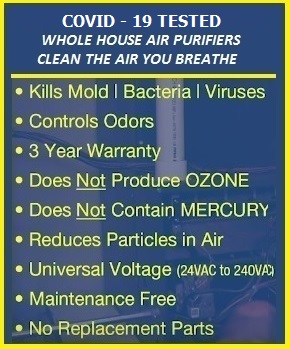HVAC GLOSSARY
AC Alternating Current – A type of current where the polarity is
perpetually reversing, causing the directional flow in a circuit to
reverse at regular intervals.
ACCA – Air Conditioning Contractors of America
AFUE – Annual Fuel Utilization Efficiency. A measurement used to
rate furnace efficiencies by dividing the ratio of heat output by
heat input. The higher the AFUE, the more efficient the furnace.
AGA – American Gas Association.
Air Conditioner – Equipment that changes temperature and
humidity levels or quality of air.
Air Flow – The distribution or movement of air.
Air Handler – Parts of a system including the fan blower, filter
and housing.
ARI – Air conditioner and Refrigeration Institute.
ASHRAE – American Society of Heating, Refrigeration and
Air Conditioning Engineers.
BTU – British Thermal Unit. Measures the amount of heat required
to raise or lower the temperature of one pound of water one
degree Fahrenheit.
BTUh – British Thermal Units per hour.
Burner – The device that facilitates the combustion of air and gas.
Burner orifice – The opening in the burner through which the gas
or fuel passes prior to combustion.
Capacity – HVAC capacity is the output produced by the heating
or cooling unit and is measured in BTU’s per hour.
Celsius – A temperature scale that registers the freezing point of water
as 0 degrees and the boiling point as 100 degrees under normal
atmospheric pressure.
CFM – Cubic Feet per Minute. A measurement of airflow volume.
One CFM is a cube of air that is 1 foot tall, 1 foot wide and 1 foot
deep. Air conditioners need approximately 400 CFM’s per ton
(12,000 BTU’s) of cooling capacity. Example: A 3 ton air conditioner
(36,000 BTU’s) would need to move about 1200 CFM’s of air.
Charging a system – Adding coolant, or refrigerant to an HVAC
system.
Compressor – A pump that increases the pressure of gas.
Condensate – Vapor that is turned into a liquid as it’s temperature is
lowered.
Condenser Coil – The outdoor coil on equipment that allows for the
removal of heat from the refrigerant, allowing the refrigerant to be
converted from vapor to liquid.
Condenser Fan – A fan that passes air over the condenser coil to
facilitate the removal of heat from the refrigerant.
DC – Direct Current. A type of electrical current that only flows in one
direction.
Damper – Found at the exit point of duct work, this plate usually
contains grates that can be opened or closed to control the flow
of air into a zone.
Dehumidifier – An appliance that removes humidity, or moisture,
from the air.
Diffuser – A grille over an air supply duct with vanes that distribute
the discharging air in a specific pattern or direction.
DOE – Department of Energy.
Downflow Furnace – A furnace with an intake on the top and an air
discharge at the bottom.
Drain Pan – The pan attached to the bottom of the evaporator coil
that collects condensation. As the refrigerant vapor is liquified, the
drain pan collects the condensation and funnels it to the drain line.
Dry Bulb Temperature – The temperature as measured without the
consideration of humidity.
Duct Work – A network of metal, fiberboard, or flexible material flowing
throughout a space which delivers air from an HVAC unit to the
respective zones of a home or office.
HER – Energy Efficiency Ratio.
Energy Star – An EPA designation attached to HVAC products that
meet or exceed EPA guidelines for high-efficiency systems.
EPA – Environmental Protection Agency.
Evaporator Coil – Also an indoor coil. A device that is designed to
absorb heat in the air in order to change the liquid refrigerant that flows
through it into a vapor. Often refered to as an A-Coil.
Fahrenheit – A temperature scale in which water freezes at 32 degrees
and boils at 212 degrees at normal atmospheric pressure.
Fan – A motor with a blower wheel or fan blade used to create air flow.
Filter – Media material that acts like a strainer to remove dirt and
undesired particles.
Flue – A vent that removes the byproducts of combustion from a furnace.
Flue Gases – Byproducts of the combustion of fossil fuels used by
heaters and furnaces. Incomplete combustion of these fuels can
produce deadly Carbon Monoxide gas (CO).
Furnace – The major component in heating a home, facilitating the
combustion of fuel and air to create heat.
Fuse – A delicate metal strip connecting two parts of an electrical
circuit. This strip breaks, or melts, in the event of excess electrical
charge, breaking the electrical circuit.
GAMA – Gas Appliance Manufacturers Association
Heat Exchanger – The part of a furnace that facilitates heat transfer,
allowing heat to be transferred to a cold area or surface.
Heat Gain – The amount of heat added or created in a designated
area.
Heating Coil – A coil that acts as a heat source for a heating
system.
Heat Loss – The amount of heat subtracted from a designated
area.
Heat Pump – A device used for either the heating or cooling of a space
by transferring heat between two reservoirs.
Heat Transfer – Moving heat from one location to another.
HSPF – Heating Seasonal Performance Factor. This factor rates the
efficiency of the heating portion of the heat pump.
Humidifier – An appliance that adds humidity, or moisture, to the air
in your home or office.
Humidistat – Much like a thermostat, this measures humidity and turns
the humidifier on and off.
Humidity – Dampness in the air caused by water vapor.
HVAC –Heating, Ventilation and Air Conditioning.
Ignition – Elevating the temperature of a substance to the point of
causing a combustion reaction.
Kilowatt (kW) – 1,000 watts.
Latent Heat – A type of heat that, when added to an area, produces
an effect other than an increase in temperature.
Multi-Stage Burners – Systems are available now, particularly with
gas-fired furnaces, that adjust the amount of heat produced by
the system based on the amount required. For example, if the
weather is mild outside, the burner may burn less gas allowing the
unit to run longer as opposed to short cycling by turning on and off
frequently. This feature increases the cost effectiveness and comfort
provided by the system.
NEC – National Energy Council / National Electric Code.
NEMA – National Electrical Manufacturing Association.
Orifice – An opening or hole.Media – The fine material of a fiter that
traps dirt, dust, mildew or bacteria.Merv Rating – Minimum Efficiency
Reporting Value rating of a filter describes the size of the holes in the
filter that allow air to pas through. The higher the Merv rating, the
smaller the holes in the filter, the higher the efficiency.
Package Unit – A heating and cooling system contained in one
outdoor unit.
PSI – Pounds per square inch.
PSIA – Pounds per square inch, absolute.
PSIG – Pounds per square inch gauge.
PVC – Polyvinyl chloride; a type of plastic, used for drain lines, flue
and combustion air pipes.
Reciprocating Compressor – A type of compressor used in cooling
systems to compress refrigerant by using a piston action.
Refrigerant – A chemical that condenses from a vapor to liquid, and
in the process, decreases in temperature.
Refrigerant Lines – Two copper lines that connect the outdoor
air conditioner or heat pump to the evaporator coil.
Refrigerant Charge – The amount of refrigerant in a system.
SEER – Seasonal Energy Efficiency Ratio. A rating system developed
by the US Government to indicate the efficiency level of cooling
equipment.
Self-Contained System – Also called a “combo” unit. A package unit.
Sensible Heat – Heat added or subtracted that causes a change in temperature.
Sensor – A device that reacts to a change in conditions. Split System –
An outdoor unit combined with an indoor unit.
Thermostat – A Sensor that monitors and controls the temperature of
an HVAC system.
Thermostatic Expansion Valve – The TXV is a device that creates a constant
evaporator temperature at the A-coil.
Ton – Unit of measurement for determining cooling capacity. One
ton is 12,000 BTUs per hour.
Upflow Furnace – A furnace that pulls in air from the bottom and
releases it through the top.
Vacuum – A space where the pressure is significantly below that of
standard atmospheric pressure.
Variable Speed Blowers – Until recently, most blowers (fans) in
furnaces were either all the way on, or off. This sometimes causes an
uncomfortable movement of the air when furnaces or heat pumps
first start up. New variable speed technology slowly increases and
decreases the blower speed as need for maximum comfort. An
additional benefit of a variable speed blower is the ability to
continually move the air. If you have a central air cleaner or air
purification system, you can’t clean the air unless the air is moving
through the system. A variable speed system allows the air to move
slowly when cooling and heating is not required, and speeds the
system up when necessary. This allows for the most effective use of
an indoor air quality system.
Volt – A unit of electro-motive force.





